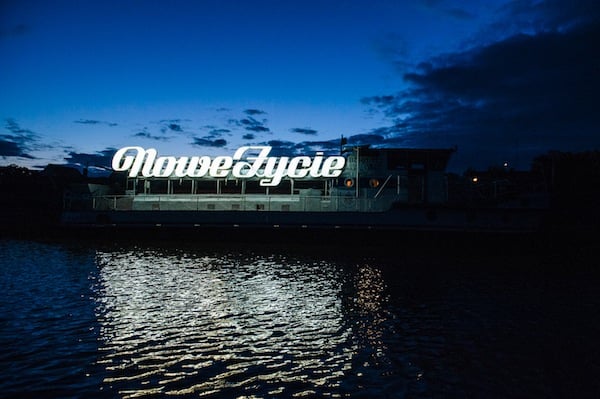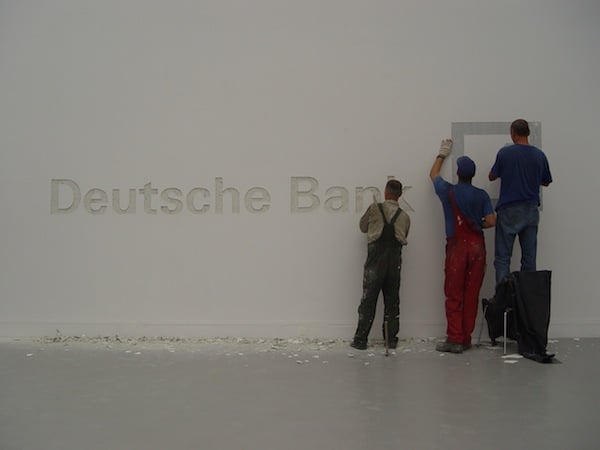Reviews
Hidden Histories Come to the Fore in this Poignant Exhibition of Contemporary Polish Art
'Common Affairs' revisits 13 years of the VIEWS award, Poland's first privately-funded art prize.

'Common Affairs' revisits 13 years of the VIEWS award, Poland's first privately-funded art prize.

Alyssa Buffenstein

25 years after the signing of the German-Polish Treaty of Good Neighborship, an agreement encouraging cultural exchange between the youth of the two countries, an exhibition in Berlin celebrates Polish contemporary art. Common Affairs: Revisiting the Views Award – Contemporary Art from Poland questions, contextualizes, and furthers the artistic exchange between the neighbors, with an exhibition that spans the Deutsche Bank Kunsthalle and the Polish Institute in Berlin. The exhibition uncovers and preserves difficult moments in the intertwined histories of Germany and Poland, presenting a series of satisfyingly critical and political perspectives.
The selection of works, curated by the German Julia Kurz, and Polish Stanisław Welbel, are dug from the archives of past nominees and winners of the VIEWS award, combined with a selection of new works commissioned from the same. The award was founded in 2003, a partnership between Deutsche Bank and the Zachęta National Gallery of Art in Warsaw. The first privately-funded art award in Poland, it opened doors for emerging artists, but corporate sponsorship also introduced new issues for these artists to work through.
Rafał Jakubowicz’s 2007 piece Untitled critiques the attempts of Deutsche Bank to align itself with contemporary art, and slyly uses its money to create essentially nothing. What remains of the piece is only documentation of the artist’s conceptual action: he hired workers to carve the Deutsche Bank logo into the wall of the Zachęta, and then to cover it up again, returning the wall to a blank slate. Jakubowicz is interested in the politics of remembrance, and his work, an exercise in making a mess and cleaning it up, could be read as paralleling the Deutsche Bank’s attempts to revitalize its image after funding Nazi projects, like the construction of Auschwitz.

Rafał Jakubowicz,Untitled (2007). Photo by Sophie Jocz, courtesy the artist and Zachęta National Gallery of Art.
Similarly using contemporary art to grapple with the past is Agnieszka Polska and Witek Orski’s 2014 video Guns. As a contested historical rumor goes, government officials drilled holes into the barrels of all guns on display at the Museum of the Polish Army in Warsaw, in order to prevent students taking part in the 1968 protests from breaking into the museum, stealing the guns, and using them during riots. The video tells this story by means of a monotonous spoken narration over a compellingly colorful, almost kaleidoscopic visual of clay models of guns hypnotically spinning around central drilled holes. The work puts into question the physical power a museum display can have, and emphasizes the ideological power of artistic expression—a key event sparking the student protests was the ban of the 1824 Romantic play Dziady for supposedly supporting anti-Soviet ideas. Guns ends with the question, “What would happen if the hole in each gun was sealed?”, attesting to the potential of art and activism to overcome repression (albeit hinting at a violent fictional future).
A different exploration of the topics of repression and expression is Karol Radziszewski’s Kisieland, (2009-2014). The ongoing project archives the artistic activities of Ryszard Kisiel, publisher of Filo, the first gay zine in Communist-era Poland. Photographs, videos, and zines also make up part of an artist-run project called the Queer Archives Institute, a non-profit organization dedicated to collecting and conserving the history of queerness in Eastern and Central Europe, helping to make a space for a narrative that might otherwise risk being overlooked and forgotten.

Karol Radziszewski, Kisieland (2009-2014). Image: Installation shot, CCA Torún. Photo by Wojchiech Olech, courtesy of the artist and CCA Torún.
With all these and more difficult political talking points, Elżbieta Jabłońska’s Nowe Życie reminds viewers that the past is something that can and must be learned from. The 10-meter-long found object, a monumental neon sign from the 1970s that reads “new life” in Polish, is almost too big for the exhibition space. Its true success, though, was its other exhibition venue—a series of rivers and canals comprising the journey from a small town in northern Poland, Nakło nad Notecią, to Berlin. The sign was lit up and loaded onto a ship, emblazoning the promise of the new and physically connecting the exhibition from one “good neighbor” to the other. Common Affairs memorializes the often tortured pasts of Germany and Poland, and Jabłońska’s piece encapsulates much of the reason why contemporary art is necessary—to remember, to spark future change, to create a new and better life.